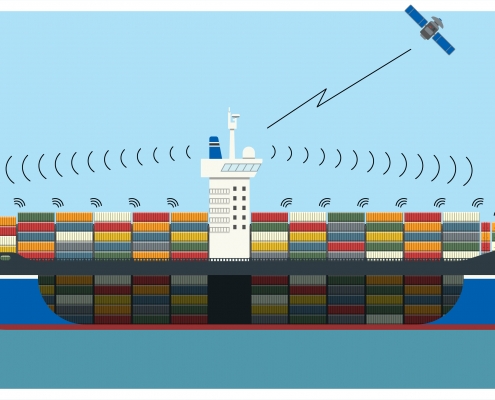Maritime – Smart Container Solution
June 24, 2019 — Digital transformation in the ocean shipping industry includes the ongoing deployment of sensors and tracking devices on refrigerated and dry shipping containers around the world. This smart container technology adoption enables greater visibility and management of goods being transported around the world.
A simple example is the shipment of bananas around the world. Shipping bananas requires refrigeration and controlled levels of oxygen and carbon dioxide while in a shipping container in order not to ripen prior to reaching the retailer. Smart container technology enables this control, tracking and monitoring to be possible.
While refrigerated containers (reefers) are being moved around on land, they are connected via commercial public mobile operator networks such as those offered by AT&T, Rogers, or Vodafone. Each container has a smart device on it that uses mobile data services (GSM or LTE technology) to connect to the network. Once connected, it can share and transfer data to a centralized location where container owners can review real-time information and make decisions. They are also able to share this information with their customers and clients.
While the smart containers are at sea, there is no public mobile network coverage. Without network coverage, the smart containers cannot be monitored remotely until it reaches the shore and reconnects. Maritime shipping routes can be up to 20+ days and the only way to ensure a refrigerated container is working while at sea is to manually check it. Large vessels can carry up to 10,000 containers so individually checking each unit becomes challenging.
Local Onboard Mobile Service
Star Solutions’ Smart Container Solution enables each vessel the ability to have a private mobile network where it can continue to monitor, track and control the refrigerated units remotely during an ocean sailing. With this private mobile network enabled at sea, shipping companies can offer its customers access to its smart container solution while on land and at sea.
The below diagram highlights the stages of mobile network coverage for goods being transported by smart containers. In stages where it states Public, it refers to the smart container being connected via the public mobile network (eg. AT&T, Rogers, Vodafone). Private refers to the instances where a private mobile network on the shipping vessel connects to the smart containers locally and then enables data to be available to centralized resources.





